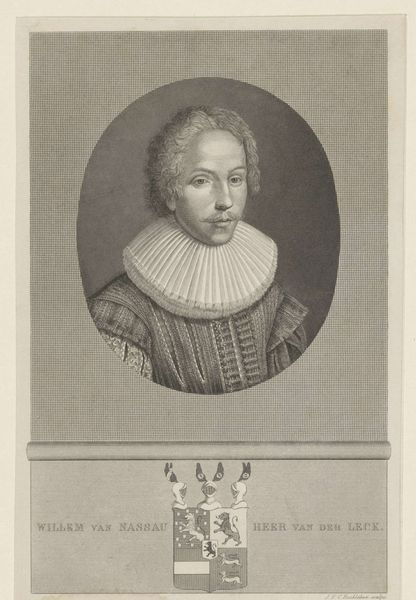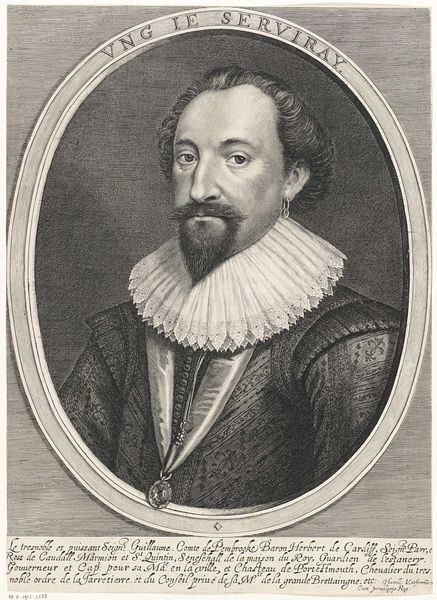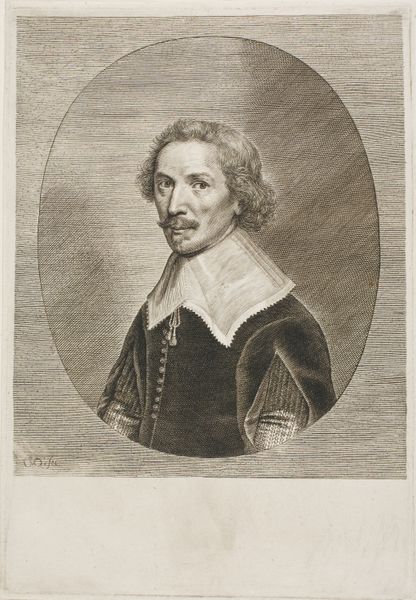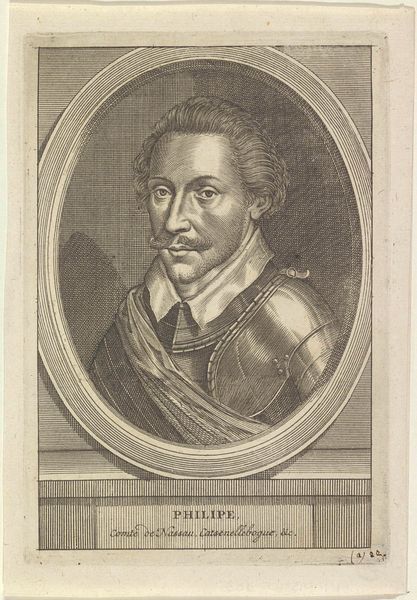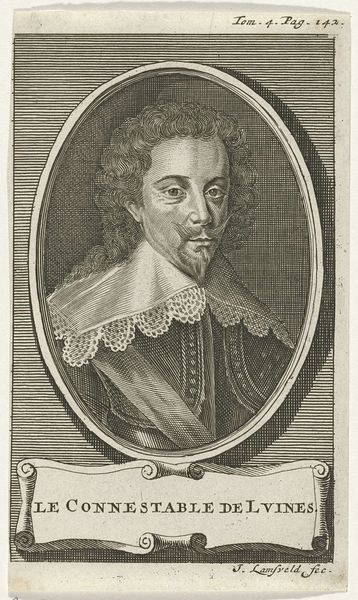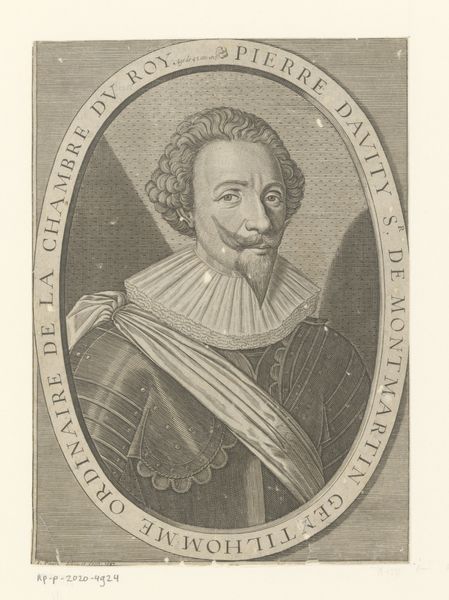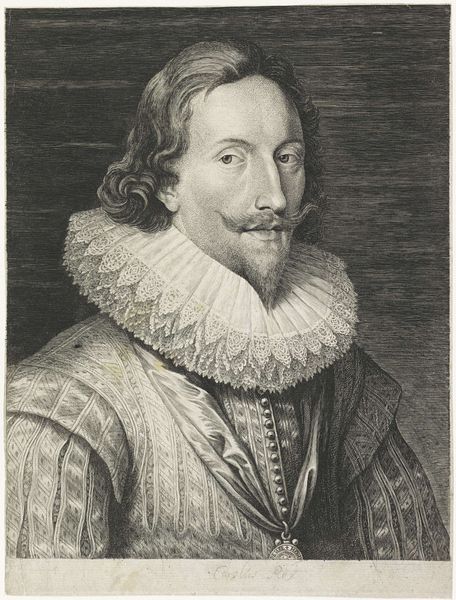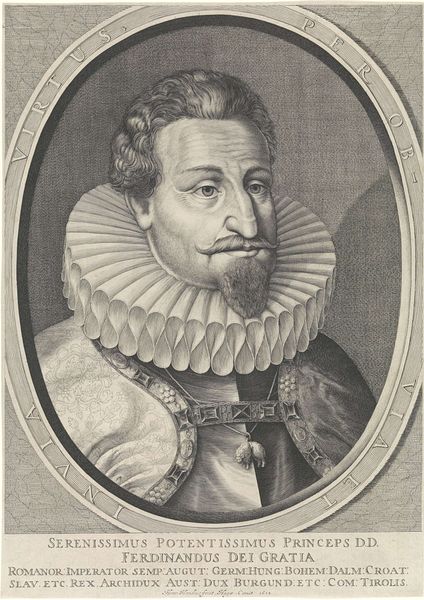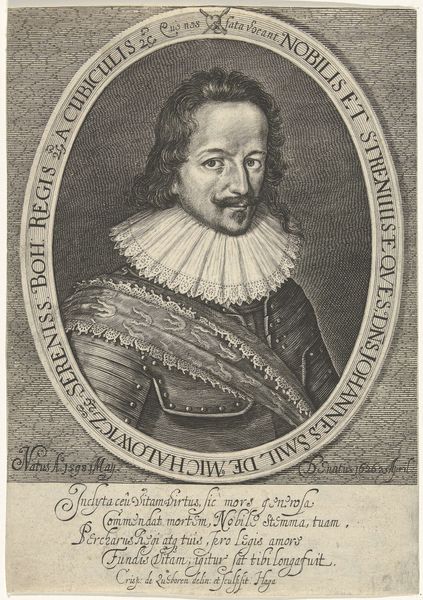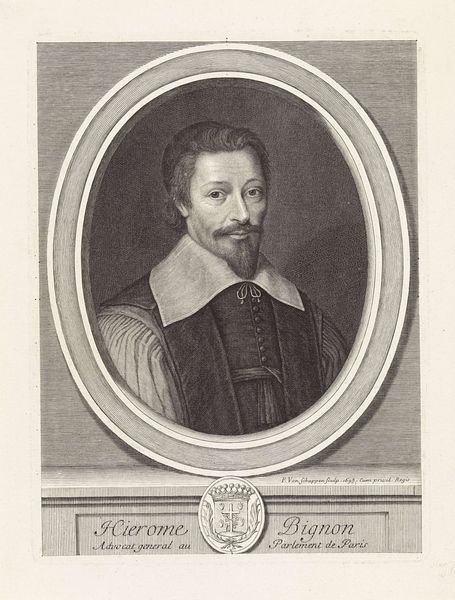
drawing, print, engraving
#
portrait
#
drawing
#
baroque
#
portrait image
# print
#
old engraving style
#
history-painting
#
engraving
Dimensions: height 412 mm, width 288 mm
Copyright: Rijks Museum: Open Domain
Editor: So, this is Willem Hondius' "Portret van Willem van Nassau-LaLecq," created in 1628. It's an engraving, and I'm struck by how formal and almost… staged it feels. Given his elaborate ruff and clothing, he definitely conveys wealth and authority. What can you tell me about how this image might have been seen back then? Curator: Indeed. The formality is quite intentional. As a print, this portrait circulated widely. Think of it as a form of political branding. Hondius, and Nassau-LaLecq himself, would have been very conscious of the image they were projecting. Prints like these were critical in shaping public perception, particularly for those involved in military and political life during the Dutch Golden Age. Consider how the text emphasizes Nassau's titles: commander, governor, a leader of the confederated Belgian army. Editor: So, it's less about capturing his individual likeness, and more about communicating his position within society? Almost like a carefully crafted press release. Curator: Precisely. Look at the oval frame surrounding the portrait, almost like a window onto this powerful man. Even the Latin inscription contributes to a sense of gravity and importance, placing him within a lineage of authority. Can you imagine how this image might have influenced ideas of leadership at the time? How would the average person understand Nassau-LaLecq based solely on this portrait? Editor: It makes me realize how actively images like this were used to build up reputations. It's definitely not a spontaneous snapshot! I’m much more aware of the propaganda potential now. Curator: And the power that images had – and still have – in shaping our understanding of historical figures. We can now view the work not just as a picture of a person, but also as a powerful statement about the construction of authority.
Comments
No comments
Be the first to comment and join the conversation on the ultimate creative platform.
